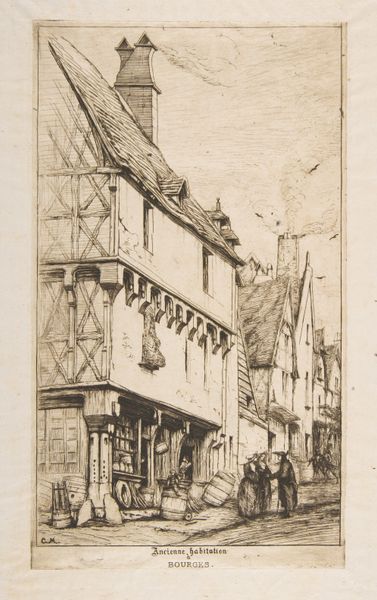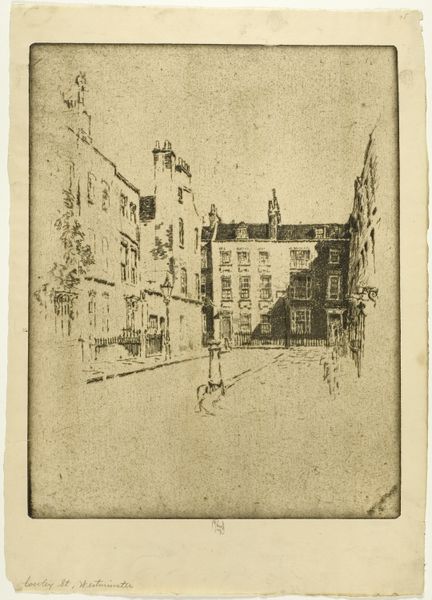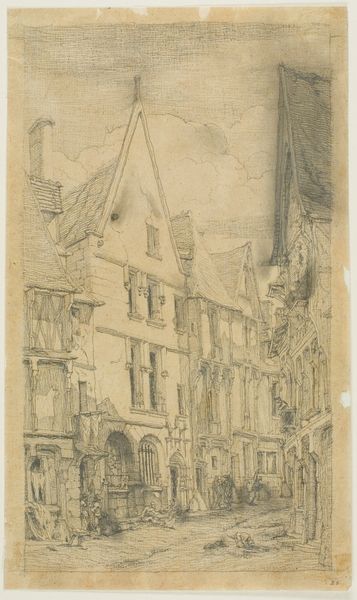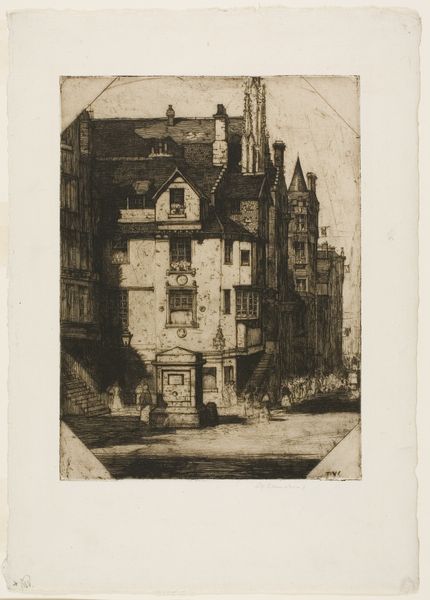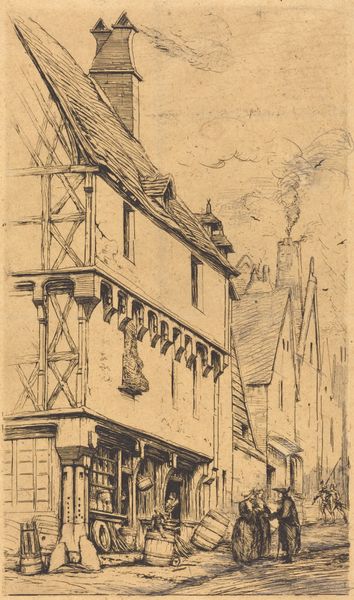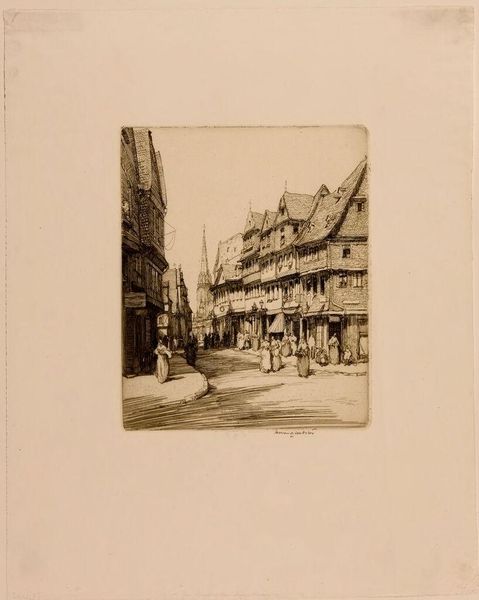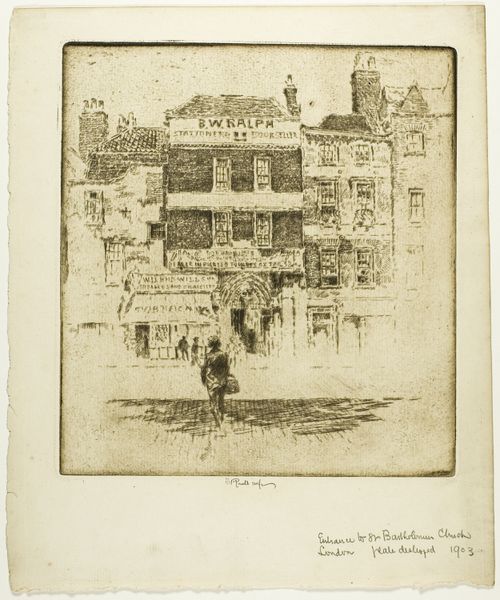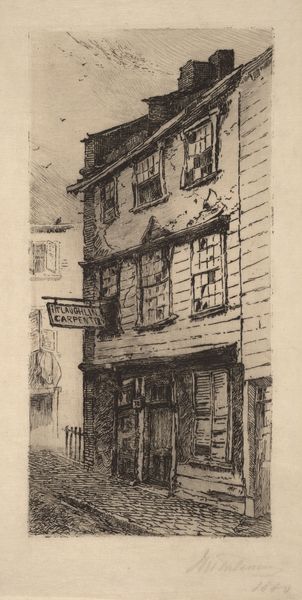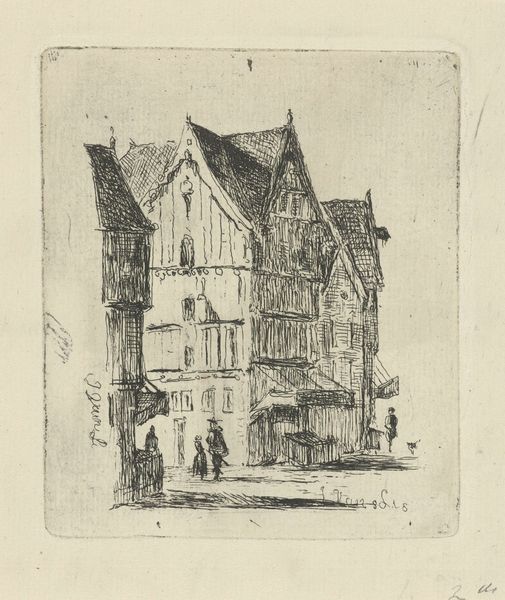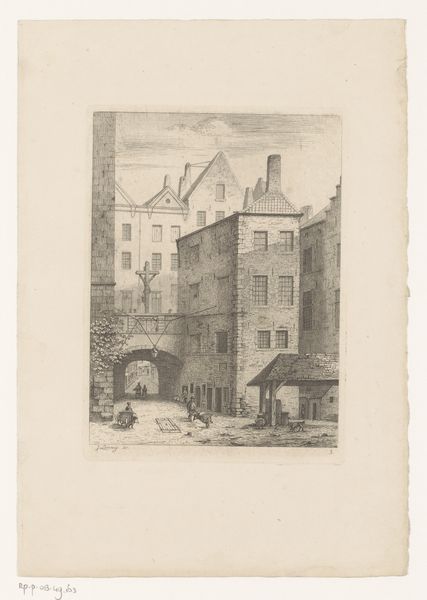
Dimensions: 225 × 179 mm (image); 275 × 213 mm (sheet)
Copyright: Public Domain
Editor: Here we have Joseph Pennell's 1907 etching, "Last of Old London, Cloth Fair." I find it melancholic; the sepia tones and sketchy lines evoke a strong sense of a bygone era. What kind of commentary do you feel the artist is trying to make with this print? Curator: Considering the social and architectural context, it speaks to anxieties surrounding urbanization and modernization prevalent at the turn of the century. Etchings like this were often commissioned and distributed, offering a widely accessible image that, in this case, sentimentalized the city’s past even as developers threatened those physical remains. Editor: So it's like a protest in ink? Were there actual movements to preserve these buildings? Curator: Absolutely. The late 19th and early 20th centuries witnessed the rise of preservation societies specifically dedicated to saving historic buildings and districts. This image participates in a broader visual culture that both documented and romanticized older urban environments. The relatively rapid expansion and transformation of London into an industrial capital can't be ignored. How do you think Pennell’s stylistic choices reflect that political sentiment? Editor: The hurried linework creates a contrast, almost as if those changes were happening too fast to accurately represent the buildings as they were. It definitely suggests that something’s slipping away. Curator: Precisely. It’s an image steeped in a kind of nostalgic preservationism that was actually politically active at the time, shaping public opinion about the built environment. Editor: I never considered an artwork like this being directly involved in those debates, it provides a valuable cultural record of urban history. Thank you. Curator: My pleasure. Recognizing that public role illuminates our appreciation.
Comments
No comments
Be the first to comment and join the conversation on the ultimate creative platform.
